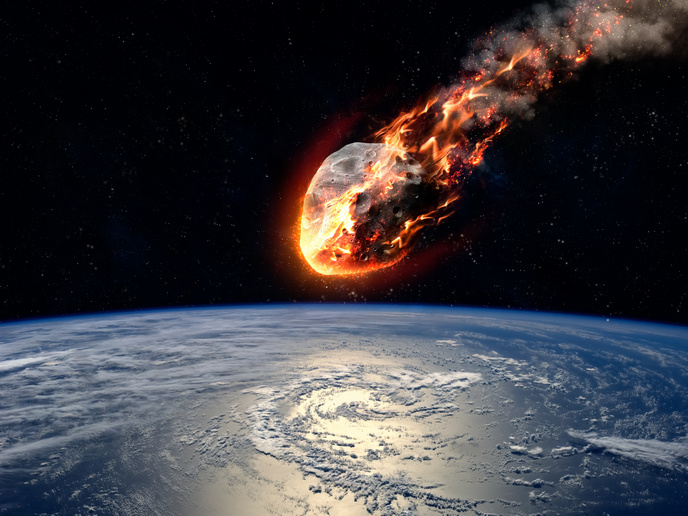Antarctica’s meteorites are disappearing into the ice, say scientists
How did life emerge on Earth? How was the moon formed? The answers to crucial questions such as these can potentially be found in meteorites, many of which are found in Antarctica. However, according to recent research supported by the EU-funded ice cubed, PROTECT(opens in new window) and CRiceS(opens in new window) projects, global warming is causing these extraterrestrial rocks – and the vital information they contain – to disappear into the ice. A study(opens in new window) published in the journal ‘Nature Climate Change’ explains why.
Five to one
Over 60 % of the 80 000 or so meteorites found on Earth have been collected from the surface of the Antarctic ice sheet. Antarctic meteorites are found in blue ice areas, where a combination of ice flow processes and local meteorological conditions remove layers of snow and ice from the surface, exposing meteorites hidden in the ice. In the past few decades, scientists have collected an impressive 1 000 meteorites a year from these areas, but this source is far from exhausted: an estimated 300 000 to 850 000 meteorites still remain on the ice sheet’s surface. The new study now reveals that as a result of a warming climate, many meteorites will be lost from the surface by melting into the ice sheet. Around 5 000 meteorites become inaccessible each year under current warming conditions – a figure five times the rate at which they are found.
A sensitive rock
The study authors explain meteorites’ susceptibility to variations in temperature: “Even when temperatures are well below zero, meteorites, with their characteristic dark crust, warm when exposed to solar radiation and can melt the underlying ice. The warmed meteorite generates a small water melt pocket below the stone, resulting in a surface depression that deepens over time into a hole, which (in conjunction with refreezing meltwater) results in the disappearance (‘sinking’) of the meteorite from the surface.” In a recent ‘CNN’ news item(opens in new window), study co-lead author Dr Harry Zekollari of ice cubed project coordinator and PROTECT project partner Université libre de Bruxelles, Belgium, remarks on the significance of cold surface temperature in meteorite discovery: “It’s really important that it’s cold and if your surface temperature starts changing, even if it’s going from minus 12 C to minus 9 C, it’s crossing a magic threshold where you’re starting to lose meteorites.” The researchers therefore estimated the loss of meteorites under different climate change scenarios. They found that if global warming is limited to 1.5 to 2.0 °C above pre-industrial levels, meteorite loss could be limited to 9 to 20 %. Under current policies (resulting in 2.6 to 2.7 % global warming), the figure rises to 28 to 30 %. The share of irrecoverable meteorites increases even further to 35 % and 55 % under scenarios with 3 °C and 4 °C of warming, potentially rising to 76 % by 2100 under a high-emissions scenario. Faced with these odds, the study supported by ice cubed (ICE³: Modelling the global multi-century evolution of glacier ICE in 3D), PROTECT (PROjecTing sEa-level rise : from iCe sheets to local implicaTions), and CRiceS (Climate relevant interactions and feedbacks: the key role of sea ice and snow in the polar and global climate system) urges the rapid collection of meteorites so as not to lose the valuable information they contain on our solar system. For more information, please see: ice cubed project(opens in new window) PROTECT project website(opens in new window) CRiceS project website(opens in new window)



